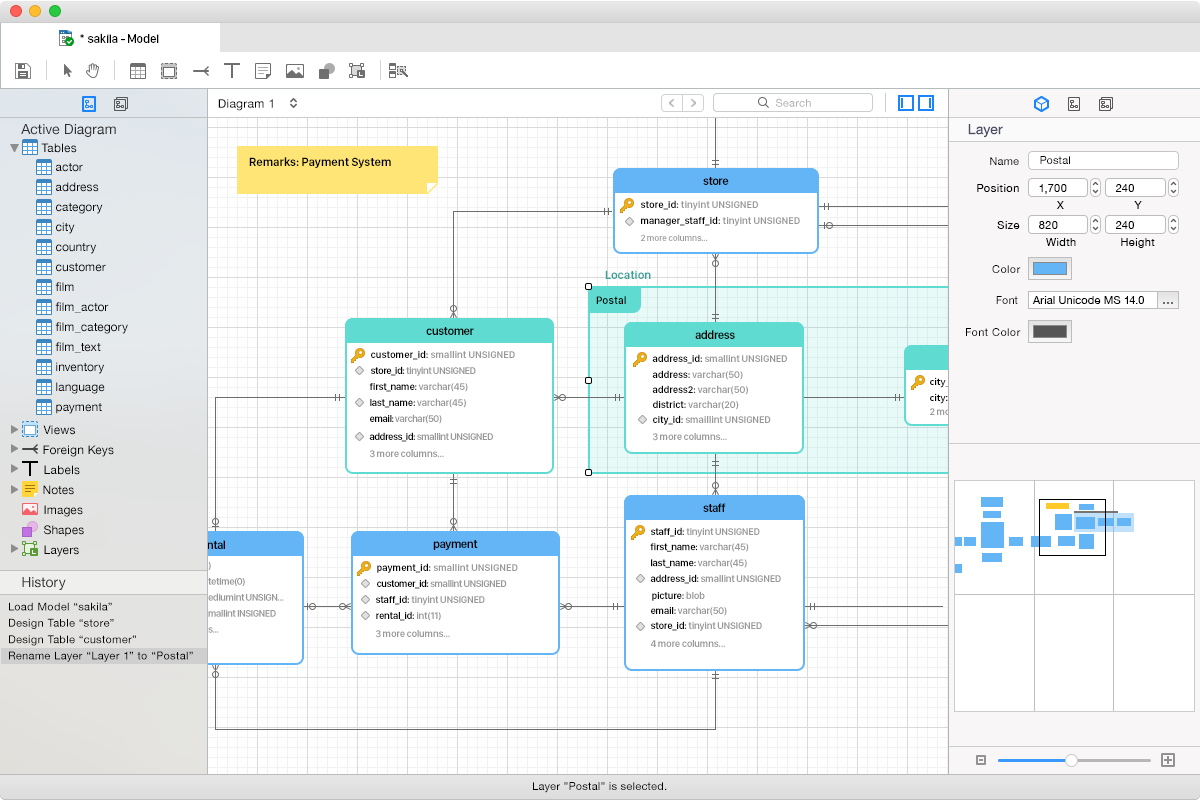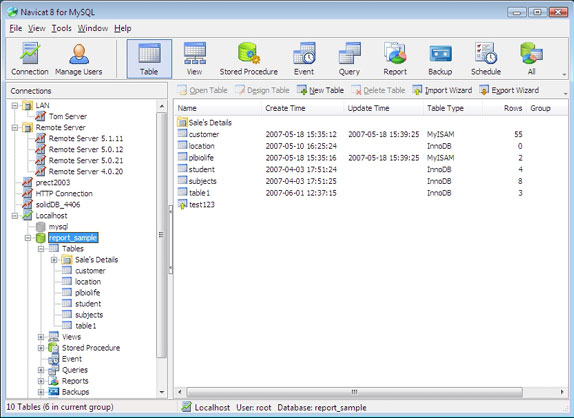
- #Navicat for mysql tutorial how to
- #Navicat for mysql tutorial install
- #Navicat for mysql tutorial free
Want to learn more about Navicat Cloud? You can do so by visiting the official Navicat site.
#Navicat for mysql tutorial how to
In this tutorial, we learned how to connect to Navicat Cloud to invite and collaborate with your co-workers. Click on your name from the top right corner to open your account profile window.You can check how much limit you have left on your Navicat Cloud account from the account profile on Navicat: You won’t lose any files or information and your files will be synched again automatically when storage space once again becomes available either by cleaning up stored objects or by purchasing additional storage units. Once you reach the storage limit, Navicat Cloud stops synching and displays a warning message.
#Navicat for mysql tutorial free
Navicat Cloud comes with 150 units of free storage whereby each connection, query, model, and virtual group counts as one unit. All that was required to store a connection on Navicat Cloud was to right-click a connection under My Connections and choose the Move/Copy Connection To > Project from the popup menu: It’s good to migrate your connection settings to Navicat Cloud first because you can’t do much of anything until you’ve established a connection to the database server. MySQL provides some features for particular version numbers and on. Moving/Copying Connection Settings to Navicat Cloud In this tutorial I will explain how to check MySQL version number in different ways. Right-click a project and choose to Collaborate with.You can add members to a project as follows: createConnection ( with your Okta domain.Upon successful login, you will see your Navicat Cloud projects in the Object Pane: Log into the database using the MySQL client using the login details of the database administrator.Ĭonst express = require ( ' express ' ) const cors = require ( ' cors ' ) const bodyParser = require ( ' body-parser ' ) const mysql = require ( ' mysql ' ) const events = require ( '. Once you have installed MySQL you can create the database that you will use in this tutorial.
#Navicat for mysql tutorial install
Depending on your operating system, you might be able to use the system’s package manager to install the MySQL server.

If you don’t have installed MySQL on your system, follow the instructions on the MySQL website to do so.

Set up a Simple CRUD Node Express Server.I will assume that you have some familiarity with Node and the npm package manager and that both of these are installed on your system.

The application will create a simple timeline in which the user can add and edit events, with a simple CRUD API. Instead of the old established LAMP stack, I will use a variant of the MEAN stack, where the M in MEAN refers to the MySQL database, with the Express.js framework to power the backend, and Angular.js for the client. In this tutorial, I will show you how to develop an Angular application using MySQL. In fact, if you are using the default installation of MySQL on a modern Linux distribution, you are likely using MariaDB. To keep all features available to the open-source community, MariaDB was created as a fork of MySQL. Recently, MariaDB was created by some of the original developers of MySQL as an open-source alternative to MySQL, which is owned by Oracle.

Plenty of literature covers the fundamentals of SQL and best practices in designing relational databases for large applications. Rows in tables correspond to data entries and rows in one table can be referenced from another table through their index. About Press Copyright Contact us Creators Advertise Developers Terms Privacy Policy & Safety How YouTube works Test new features Press Copyright Contact us Creators. MySQL is also a relational database, with data stored in tables with strict data definitions. It is the M in the LAMP stack, and powers a huge number of web servers across the world. The MySQL database has been a reliable workhorse for web applications for many years.


 0 kommentar(er)
0 kommentar(er)
